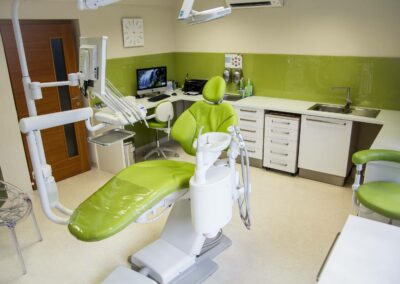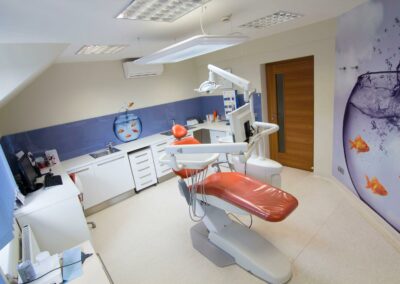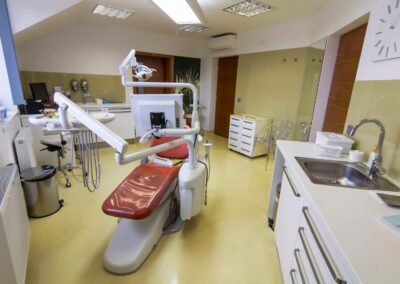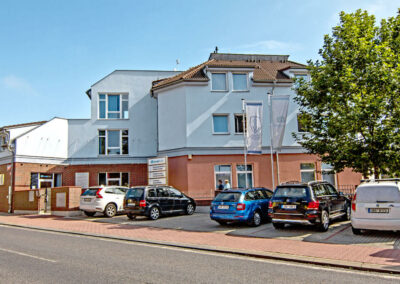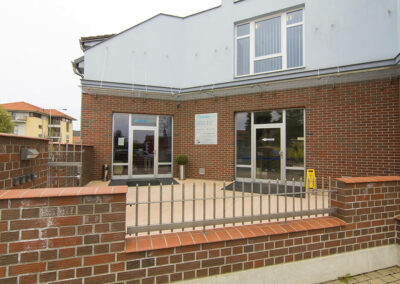Before each implantation, the dentist performs a careful examination to assess whether suitable conditions for implantation are ensured. The examination includes 3D imaging using CBCT, which gives the doctor exact information about the situation in the given area. The dentist then prepares a treatment plan and price calculation for the patient.
The procedure itself is painless under local anaesthesia. The doctor will use calibrated instruments to make a short incision, expose the necessary bone, and create a hole for the dental implant. After the implant has been carefully inserted, the wound is closed with a suture and everything is left to heal.
In the case of simple implantation, it is a relatively quick and painless procedure without significant post-operative complications.
After healing into the bone, the implant is exposed by the doctor and a healing abutment which protrudes above the gum is placed on top of the implant. The healing abutment gradually shapes the gum around the implant so that the resulting dental crown looks completely natural.
After that, impressions are made, on the basis of which the dental crown is fabricated in the dental lab and, in the case of a screw-retained restoration, it is attached to the implant using a fixation screw. The hole in the dental crown is closed with a small white filling and you can use the new tooth again to eat and speak without any limitations.












